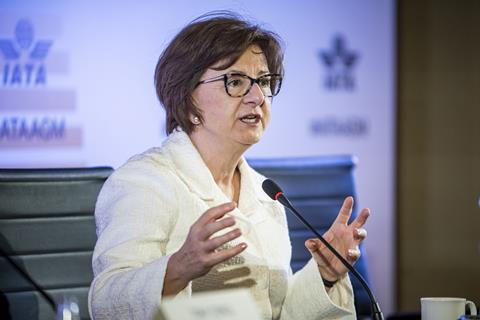Airline association IATA forecasts an average of $128 billion in annual capital expenditure will be needed for the airline industry to reach net-zero emissions by 2050.
It made the prediction as it released new finance and policy road maps during its World Sustainability Symposium event in Miami on 24 September, where it insisted that the air transport industry’s energy transition is feasible, but only if stakeholders – and governments in particular – collaborate and act with greater urgency.
Describing the $128 billion forecast as a “best-case scenario”, IATA notes that it is “significantly less” than total investments in solar and wind energy markets between 2004 and 2022, which it puts at around $280 billion.
The capital will fund building new facilities, including the sustainable aviation fuel (SAF) refineries that are central to the sector’s net-zero road map, IATA says.
“The costs and challenges associated with the energy transition are large, but the opportunities are even greater,” says Marie Owens Thomsen, IATA’s senior vice-president of sustainability and chief economist.
“Countries have an opportunity to build new industries in agriculture and energy, and to benefit from the catalytic growth impact of sustainable air transport.”

Indeed, Owens Thomsen further notes that renewable energy production would deliver a suite of products covering multiple industries, of which SAF for airlines is just one.
“To realise the opportunities, we need all minds to unite in this mission, and all policymakers, multilateral organisations, investors, solution providers and the air transport industry to work together,” she says. “Such transformative collaboration can pool resources and target meaningful action for greater impact.”
IATA continues to argue that the airline industry cannot be expected to fund new facilities, particularly given its long history of thin profit margins.
The association further expects extra costs amounting to $1.4 billion in the global airline industry from procuring SAF in 2025, but notes this could rise to $744 billion in 2050 once SAF usage is more widespread and other fuels such as hydrogen come into play.
“These numbers highlight the need for speed and scale in bringing solutions to market, so that net-zero CO2 emissions can be achieved,” it says.


























